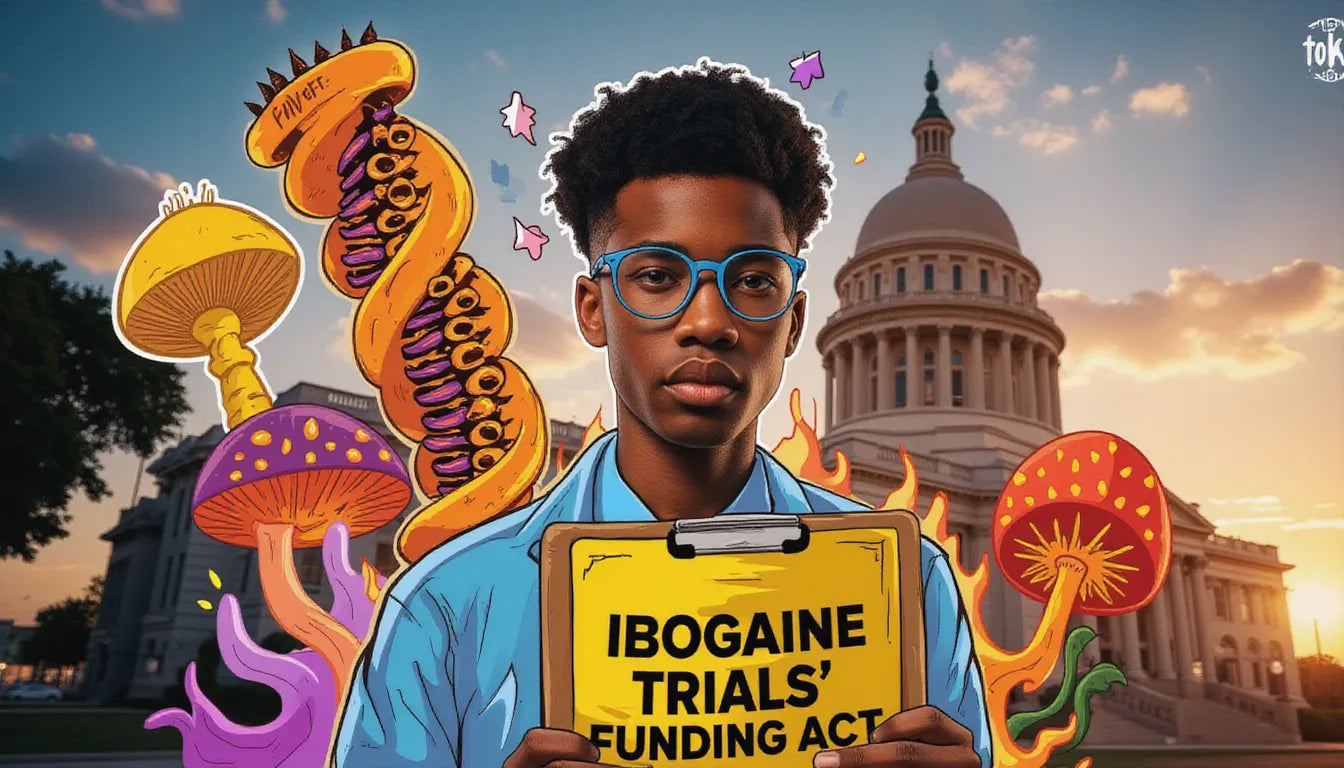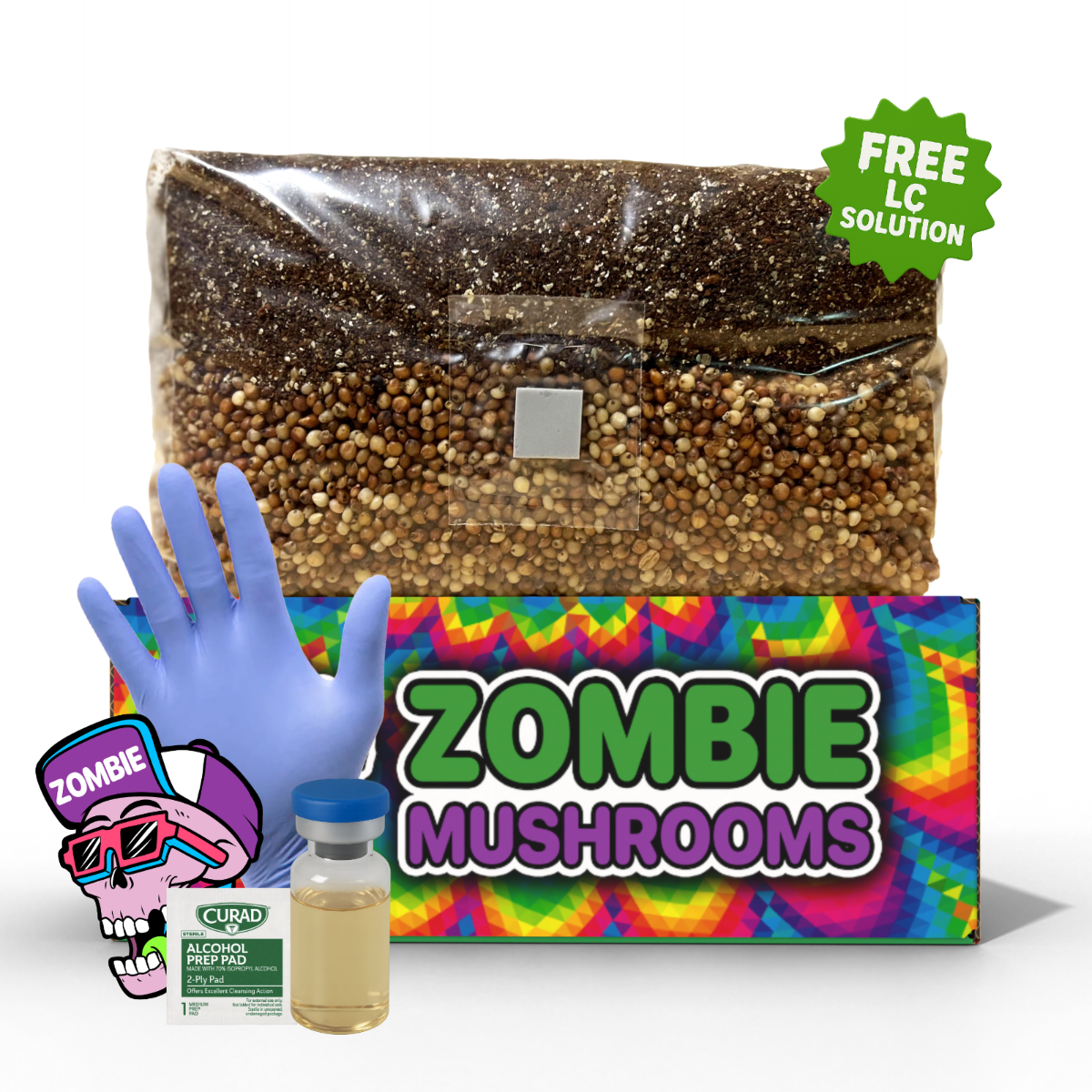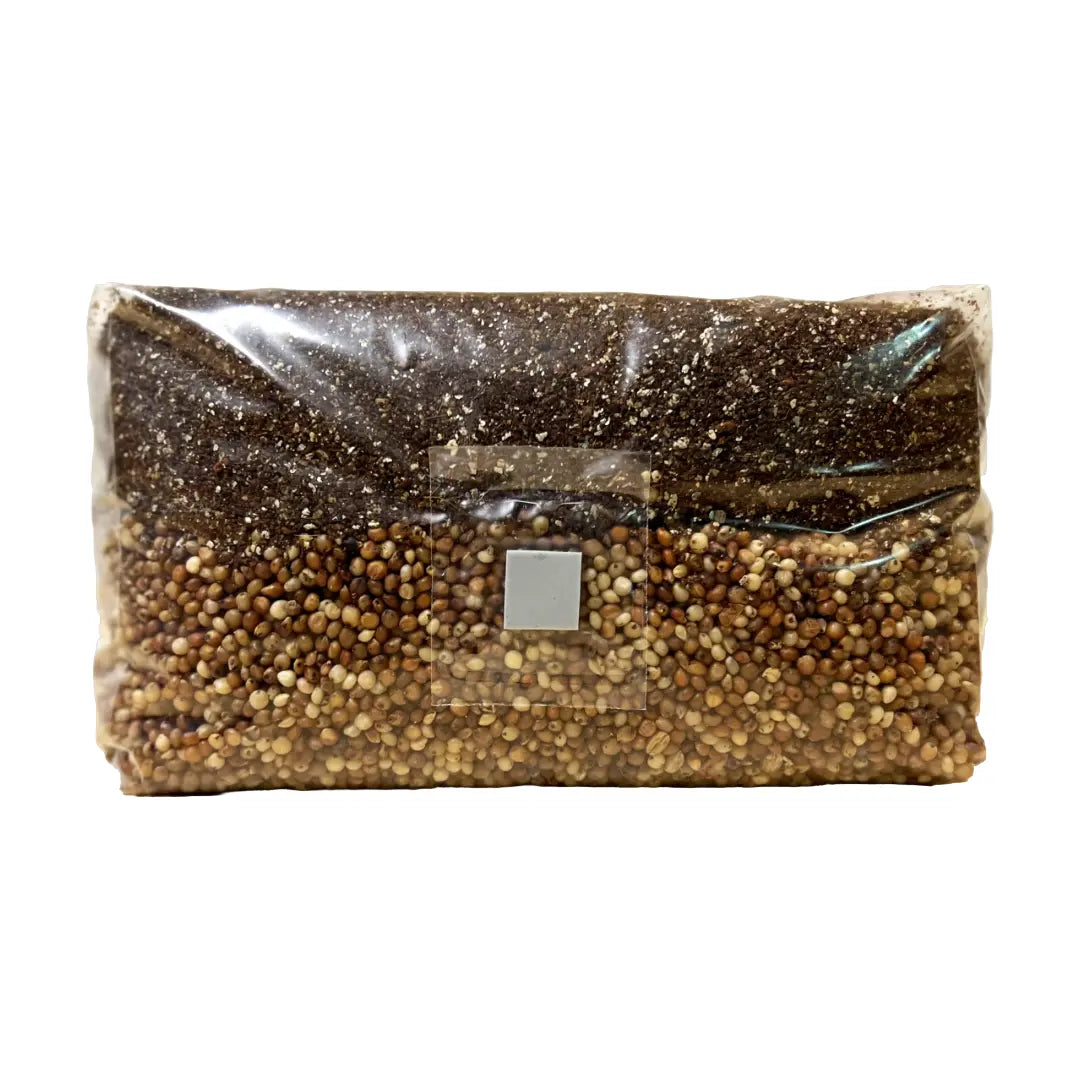⬇️ Prefer to listen instead? ⬇️
- Studies show ibogaine may greatly reduce opioid withdrawal symptoms in just one session.
- Between 1990–2008, at least 19 deaths were linked to ibogaine treatment, often tied to heart problems.
- Texas is putting $50 million into starting the biggest state-led psychedelic research effort in U.S. history.
- Most ibogaine research just watches what happens and does not use blinded studies where some people get a placebo.
- Indigenous communities are not yet part of talks about sharing benefits, even though they have used ibogaine traditionally.

Ibogaine Trials in Texas: Breakthrough or Boondoggle?
Texas is starting a bold and unprecedented plan in psychedelic medicine: a state-backed, $50 million research effort to study ibogaine for treating opioid use disorder.
With support from a rare group of bipartisan lawmakers, mental health advocates, and military veterans—and endorsed by public figures like Rick Perry—the program hopes to speed up drug research and show how American states can directly fund psychedelic science.
But this quick rollout also raises questions about safety, ethics, fair access, and how politics affects science.

What Is Ibogaine? A Psychedelic With Complex Roots
Ibogaine is a natural chemical from the root bark of the Tabernanthe iboga plant. The plant grows in the rainforests of Central and West Africa. Traditionally, it is very important for spiritual and cultural reasons among the Bwiti religion in Gabon.
People there use it in starting rituals and healing ceremonies. People see it as a way to connect with the divine. They believe it helps people look inward and find deep thoughts or spiritual meaning.
Scientists call ibogaine an unusual psychedelic because it can make people feel detached or see things that aren't there. It works in many different ways in the body.
It affects the NMDA receptor (like ketamine) and the kappa and mu opioid receptors (where many painkillers work). It also affects serotonin and dopamine brain systems.
It affects so many things that scientists call it a "dirty" drug. This wide range of effects probably helps it stop addiction cycles. But it also makes it very hard for researchers to figure out which effects are helpful and which are risky.
Unlike more well-known psychedelics like psilocybin or LSD, which usually cause strong visions and emotional release, ibogaine causes a long and less emotional experience.
This often lasts 12 to 24 hours. People who use it often say it feels like a "waking dream". They have memory flashbacks and think about their past. Sometimes they also feel sick or shaky.

Ibogaine and the Opioid Crisis: Miracle Cure or Dangerous Gamble?
The U.S. opioid epidemic continues to devastate families and communities, with over 100,000 overdose deaths reported annually. Standard treatments like methadone and buprenorphine work for many people, but people must take them forever. And they don't get to the deep reasons why people become addicted. This is where ibogaine comes in. People talk about it helping them "reset" their addiction in just one session.
Studies outside the U.S., mostly in places where the rules are not clear, like Mexico, New Zealand, and Brazil, show some early promise. For instance, a 2017 study from Mexico watched what happened to people. It reported that a single dose of ibogaine greatly reduced withdrawal symptoms and cravings in people who were dependent on opioids.
This lasted weeks to months, which is much longer than standard drug treatments. Participants even said they felt less needing it mentally.
But these findings have not been studied as carefully as they should be. Few ibogaine studies have used many people, random groups, or placebos for comparison.
These are the best ways to test drugs. Also, most research happens in places that are not strict medical settings. This makes it hard to know if the results can be repeated and if it's safe.
Ibogaine is promising but also dangerous, because it can cause harm to the brain and irregular heartbeats. This includes a problem called QT prolongation, which can lead to deadly heart issues if no doctor is watching.
Texas' plan to pay for careful research that meets FDA rules tries to close the gap between stories people tell and the best ways doctors treat patients.
Why Texas? Political Influences in a Psychedelic Push
A place known for conservative views might seem like an odd spot for psychedelic reform, but Texas is creating a new way of doing things. Instead of just letting people use psychedelics for fun or spiritual reasons, like they do in Oregon or Colorado, Texas is using psychedelics in a practical way to help with big health problems. This is especially with mental health, addiction, and veteran suicides.
The support of former Governor Rick Perry was very important. By saying that funding ibogaine was a "patriotic response" because thousands of military veterans die from suicide or opioid addiction, Perry and allies got Republicans and Democrats to agree much faster than usual.
When he talked about it, Perry stressed that psychedelic medicine isn't just for people with liberal views. He said it's about helping people suffer less, getting their lives back, and respecting their service.
Bills like House Bill 4288, which allowed for the $50 million funding plan, got support from both Republican and Democratic lawmakers. They saw the law not as changing the culture, but as a way to help people based on science.
Looking at Texas psychedelic research as a public health action by the state—instead of something driven by people or tied to progressive politics—has helped more people support it, no matter their political ideas.
This forms a different way to approve or allow psychedelics. This way starts at the top and is based on policy. And it's set up in a practical way to not upset conservative voters.
Fast-Tracking Psychedelic Medicine: Infrastructure, FDA, and IP Hurdles
Starting ibogaine trials that aim for drug approval is much harder to set up than many people think. Unlike psilocybin or MDMA, these have already been through different phases of trials approved by the FDA, mostly done by groups like MAPS or university teams. But ibogaine is still in a legal grey area at the federal level. The government lists it as a Schedule I substance and no one has a patent on it yet.
To get FDA approval, studies must go through three clinical phases:
- Phase I: Safety in small groups of healthy volunteers.
- Phase II: How well it works in people with the problem they are studying—like opioid use disorder here.
- Phase III: Testing many people in many places to make sure it works and watch for side effects.
Each phase needs money, partnerships with universities or hospitals, standard sources for synthetic ibogaine, full ethical reviews, and the right setup to deal with the long and often physically hard experience ibogaine causes.
Most importantly, researchers must also deal with issues about who owns the rights to the drug. Since ibogaine comes from nature, no one can get a patent on it the way it is now. This means drug companies have less reason to make money from it.
But if research paid for by taxes finds better versions, ways to give it, or man-made versions of ibogaine, private companies could get the patents. This raises worries about who makes money from the state's investment.
The important thing is to set up partnerships between the state and companies that require data that anyone can see, clear pricing plans, and clear rules about who can sell the treatments that come from the research.
Public Funding, Private Gains—Or Shared Success?
The mix of state money and private business brings up an important talk about fairness and who owns things. When state funds start new ideas, but private companies make money from patents that only they have or run expensive clinics, taxpayers end up paying for treatments they might not be able to afford later.
Supporters say this model lets things move quickly and gets around slow federal processes. Critics ask if the average American—especially people who are most at risk and affected by the opioid crisis—will ever be able to get ibogaine treatments if they cost too much or are controlled by big companies.
Being open about things will be very important. The public deserves to know how the $50 million is spent—which universities or hospitals get it, what stages of the trials it pays for, and what deals are made about selling the drug later. Just as important, the state must put rules in place that stop people from keeping data secret or making unfair profits.
Here's what an ideal future plan might look like: Treatments found using state-backed ibogaine trials are made affordable. This could happen through state help with costs or by adding them to public health plans like Medicaid or VA benefits.

Safety First: The Underreported Risks of Ibogaine
Ibogaine's nice story about fixing addiction needs to be balanced with serious worries about safety. Between 1990 and 2008, at least 19 deaths were linked to ibogaine use around the world.
This is worrying since not many legal or underground sessions happen worldwide. Most deaths happened because of heart problems that weren't checked for or because people used other drugs too.
Unlike psychedelics that are studied often, like psilocybin. Psilocybin is almost never toxic and has no documented deaths. But ibogaine can mess with heart rhythm.
This can cause a very dangerous condition called torsades de pointes that can kill. The FDA decided not to look into ibogaine research in the 1990s because of these heart problems.
Today, any clinical work starting again must include strict checks. This means EKGs before treatment, heart monitoring, and doctors watching in places ready for intensive care. And it's why Texas wants to make it a medical treatment, not something people use on their own without a doctor.

Indigenous Knowledge and the Ethics of Reciprocity
Ibogaine doesn’t start with the West—it starts in West Africa. For centuries, Bwiti communities have kept the use of iboga safe as a spiritual medicine and a group ritual for change. But people doing modern ibogaine trials rarely even recognize where it comes from, and they certainly don't respect it.
When ibogaine is turned into a product for Western medicine, there are no ways to share the benefits or give back to the Indigenous people who cared for it. Without including African researchers, scientists who study plant use by people, or local economies in how ibogaine is supplied, the process becomes very much like stealing biological resources.
Also, the iboga plant (Tabernanthe iboga) is now in danger because too much is being picked for the growing demand in the West. Developing ibogaine in an ethical way should look into man-made options (like 18-MC). It should also grow the plant on farms in a way that doesn't harm the environment, working with fair trade partners. And it should help keep the culture around iboga alive.
A future plan that includes everyone must make sure that when ibogaine is used in medical places, the cultures that cared for it originally are respected, paid back, and celebrated.

Veterans and Vulnerable People: Hope or Harm?
The opioid crisis, PTSD, and depression disproportionately affect veterans and low-income individuals. These groups are also the most likely to be put in trials for new treatments when they come out. This is often because they feel they have no other choice.
It’s no coincidence that military veterans are at the center of Texas’ ibogaine trials. Many are pushing for psychedelic access after finding that standard mental health drugs don't work well enough. But that strong feeling can become using people unfairly if there isn't good watching.
Will these individuals get enough help preparing mentally and working through the experience? Are they fully informed about ibogaine’s risks? Will they be checked on for their health long after the trials, or left on their own after the trials end?
Ethical psychedelic research requires not just people agreeing after they know the facts. It also requires understanding different cultures, being careful with trauma, and having long-term plans for care. Psychedelics do not "fix" people. They start a process. Follow-up support matters just as much as the medicine itself.

Comparisons to Other Psychedelic Movements
To understand Texas' approach, it helps to look at what other U.S. states are doing:
- Oregon has created places for psychedelic services that focus on the community and are not medical under Measure 109.
- Colorado has made natural psychedelics legal to possess in small amounts and lets people have private sessions with a guide.
- California has made psychedelics legal to possess in small amounts in many cities and talked about state rules and education about them.
These states treat psychedelics not only as medicines, but as spiritual tools, things to improve well-being, and resources for the community. But Texas has chosen a drug-focused path. This means it's controlled, happens in medical settings, and seeks FDA approval.
Whether one model is better isn’t the point. What matters is that each fits with the state's politics, public health needs, and how people feel about things. Having different policies allows states to try things out. And having different psychedelics allows for healing that fits each person.
Building a National Blueprint?
Despite being known for conservative views, Texas may show other states how they might deal with psychedelic health issues. Areas like Florida, Arizona, or Georgia may use ibogaine funding as a model—especially in addressing veteran care or opioid recovery.
This could change national drug rules in a big way. If the federal government stays stuck, then states leading clinical research could become the usual way.
Yet this model must find a balance between what makes sense for businesses and what is good for everyone. Without ways to protect the public, like rules about pricing, open data, and making sure people can get the treatment, success in Texas could accidentally lead to businesses unfairly making money.

Psychedelics Are Not One-Size-Fits-All
For people who are part of the wider psychedelic and mushroom wellness community, the ibogaine experiment in Texas shows that things are different. Not all psychedelics are the same or have the same risks. Psilocybin, which is seen as a gentler, more predictable substance, works better for group settings and spiritual uses. Ibogaine is a medical sledgehammer. It's good for very serious problems, but you need to be much more careful with it.
As more people become interested in mental wellness, it becomes more important than ever to tell the difference between hype and facts, old ways and new ideas, and helping or hurting people.
Final Thoughts: Bold Vision or Reckless Gamble?
Texas’ $50 million ibogaine trials are a really big deal. They could change how the U.S. handles the opioid epidemic and show what states can do in a new way when federal agencies take too long with treatments that show promise. Yet this vision must be balanced with being ethical, careful science, and being answerable to the public.
Whether this effort becomes a good example of using psychedelic medicine responsibly—or a warning about doing things too fast—depends on the choices made now.
If you care about psychedelics, wellness, mental health, or ethical science, now’s the time to pay attention, speak up, and help guide the talk.



